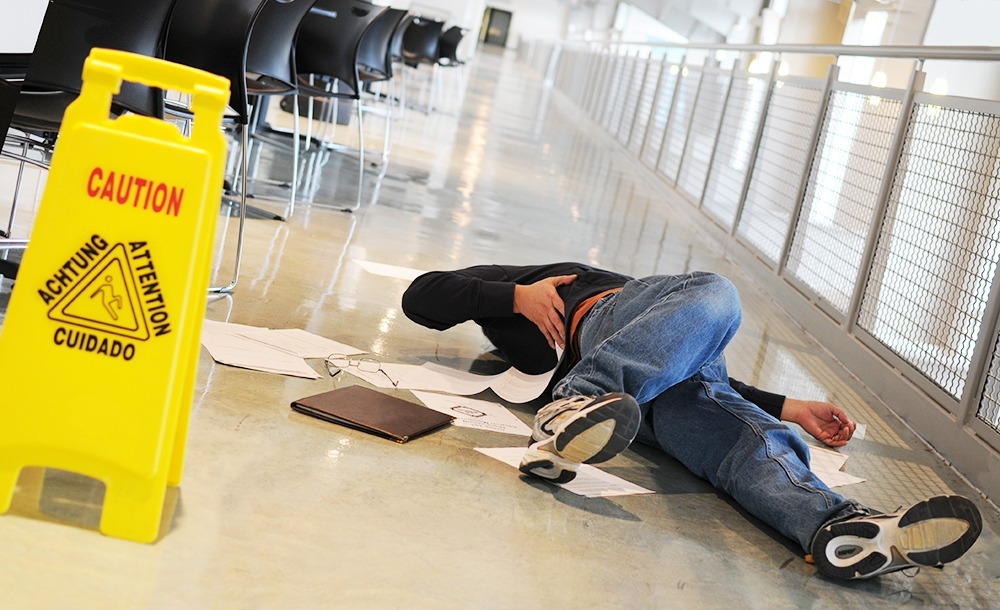Understand the Critical Elements That Could Lead to a Successful Slip and Fall Lawsuit
Share:
Slip and fall accidents are some of the most common personal injury claims, and they can happen anywhere — in a grocery store, at a restaurant, on a sidewalk, or even in your own home. While many of us have experienced a minor slip or stumble, it’s important to know that not every fall automatically leads to a personal injury claim. So, how can you tell if your slip and fall injury is something that could qualify for compensation?
In this post, we’ll walk you through the key signs that may indicate you have a valid slip and fall injury claim. Understanding these factors will not only help you determine if you have a case, but it will also set you on the right path to getting the compensation you deserve.
# 1: You Sustained a Significant Injury
This might seem obvious, but it’s worth stating: if you’ve been injured in a slip and fall accident, the severity of your injury matters. To have a valid claim, you generally need to have sustained an injury that requires medical attention or treatment. This could include bruising, fractures, sprains, dislocations, or even traumatic brain injuries (TBI) if you hit your head during the fall.
If your injury is relatively minor (like a small scrape or bruise) and didn’t result in medical treatment, it might not be worth pursuing a personal injury claim. On the other hand, if the injury is severe enough to cause ongoing pain or require long-term care, then you likely have a case worth pursuing.
# 2: There Was a Hazardous Condition at the Location of the Fall
In order for your slip and fall injury to be actionable, there generally has to be a dangerous condition at the location where the accident occurred. Some examples of hazardous conditions include:
- Wet or slippery floors (e.g., spilled liquids or cleaning solutions)
- Poor lighting that made it hard to see hazards
- Broken or uneven flooring (like cracked tiles or torn carpets)
- Unmarked or improperly placed obstacles (like boxes or cords left in walkways)
- Snow, ice, or other weather-related conditions that weren’t addressed or cleared
If you slipped and fell because of one of these hazards, it may indicate that the property owner or manager failed to maintain a safe environment. This could strengthen your claim.
# 3: The Property Owner or Occupier Was Negligent
In slip and fall claims, the responsibility for maintaining a safe environment typically falls on the property owner or occupier. For instance, if you fell in a store, the store owner may be liable for failing to clean up a spill. If you tripped over a broken sidewalk, the local municipality or property owner could be held responsible for not repairing it.
Negligence occurs when the responsible party either knew or should have known about the hazardous condition and didn’t take the necessary steps to fix it or warn others. If you can show that the owner failed to maintain the property or was aware of the hazard but did nothing to address it, your claim will be much stronger.
# 4: You Noticed the Hazard Before the Accident (or It Was Obvious)
Did the hazard that caused your fall go unnoticed by you before the accident occurred? In many cases, property owners are only responsible for hazards that they knew about or should have known about. However, if the hazard was clearly visible or if there were warning signs that should have been obvious to any reasonable person, the property owner could be liable for not addressing it.
If you saw the hazard but still slipped or tripped, it could indicate that the owner was negligent in addressing the issue. For example, if there was a “Wet Floor” sign but the floor remained wet for hours without anyone coming to clean it up, this could demonstrate negligence on the part of the property owner.
# 5: You Didn’t Contribute to the Accident
Another key factor to consider is whether or not you were partially responsible for the fall. While some states follow a comparative negligence rule (where your compensation is reduced if you were partially at fault), others might bar recovery if you were primarily responsible for the accident.
If you were distracted, intoxicated, or acting recklessly when the accident happened, it could impact your ability to file a claim. But if you were simply going about your day when an unexpected hazard caused you to fall, it could strengthen your case.
# 6: You Reported the Accident Immediately
After any slip and fall accident, it’s critical to report the incident right away to the property owner or manager. Whether it happens at a store, restaurant, or any other public place, reporting the fall helps create a record of what happened. Be sure to note the time, date, and circumstances surrounding the incident.
If there were witnesses, be sure to get their contact information, as their testimony can help substantiate your claim. Additionally, if the property owner or manager took steps to fix the hazardous condition after the accident, this could help prove that the condition existed before your fall.
# 7: You Have Documentation of Your Injury and Treatment
To have a valid claim, you must be able to prove the extent of your injury and the medical treatment you received. This includes:
- Doctor’s reports or medical records showing the diagnosis and treatment
- X-rays, MRIs, or other diagnostic images that show the extent of the injury
- Bills or receipts for medical treatment, therapy, or medications
- Evidence of lost wages if your injury caused you to miss work
Having detailed documentation of your injury and treatment strengthens your case and provides evidence of the impact the accident has had on your life.
# 8: Your Injuries Have Caused Long-Term Effects or Disability
If your slip and fall injury resulted in long-term pain or permanent disability, you could be entitled to more substantial compensation. Chronic pain, mobility limitations, or ongoing therapy can impact your ability to work or engage in normal activities. In cases like these, the financial and emotional toll of your injury can be significant, making it important to pursue the compensation you deserve.
Final Thoughts: Should You File a Claim?
If you’re checking off these signs and recognizing that you might have a valid slip and fall injury claim, it’s important to consult with an experienced personal injury attorney who can assess the specifics of your case. They can help you gather evidence, navigate the legal process, and ensure that you get the maximum compensation for your injuries.
Slip and fall injuries can leave you in pain, facing expensive medical bills, and dealing with long-term consequences. However, if you were hurt because of someone else’s negligence, you don’t have to bear the burden alone.
Take Action Now — Don’t Let Your Injury Go Unnoticed!
If you’ve been injured in a slip and fall accident, the clock is ticking. The sooner you take action, the stronger your case will be. At DuFault Law, we are dedicated to helping victims like you get the compensation they deserve for medical expenses, lost wages, pain, and suffering.
Don’t wait for the situation to get worse. Contact us today for a FREE consultation and let us evaluate your case. We’ll help you navigate the legal process, fight for your rights, and ensure you get the justice you deserve.
Call us now at (239) 422-6400 or email us at contact@dufaultlaw.com to get started. Your recovery starts with the right legal team by your side — and we’re here to help!
Act now—your future well-being depends on it!



Comments are closed